Early Bird Deadline
30 November 2025
Judging
Date
23 & 24 March 2026
Winners Announcement
22 April 2026
30 November 2025
23 & 24 March 2026
22 April 2026
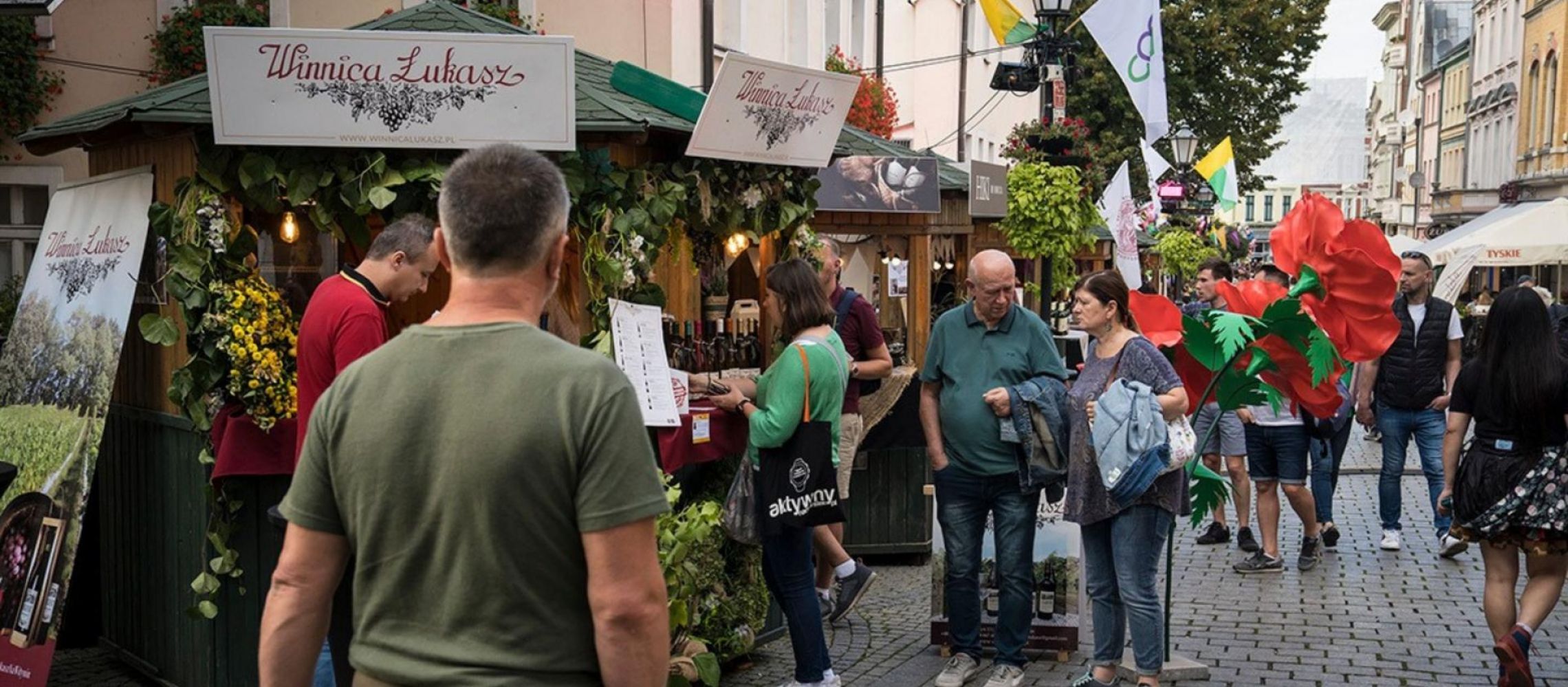
Poland, long overlooked by its more well-known wine-producing neighbors, is emerging as a noteworthy player in the global wine industry. Often unnoted in the world of wine, Poland is quietly undergoing a renaissance in winemaking, blending centuries-old traditions with modern innovation. This resurgence, which began in 2009, has seen the number of wineries grow to 380, mostly small operations spread across the country but with a notable concentration in the east and southwest.
Poland's wine scene is thriving with a winemaking history that dates back to the 10th century and a modern revival fueled by innovation and dedication. Let’s delve deeper into Poland's wine industry, highlighting its regions, producers, and global market presence.
Winemaking in Poland dates back to 966 AD with the advent of Christianity. Dating back centuries, Poland’s vineyards flourished during the Middle Ages and the Renaissance. The 14th century was a pinnacle for Polish wine, with commercial wineries thriving in cities like Toruń, Płock, Lublin, Kraków, and Silesia. However, the 20th century saw a decline due to political and climatic challenges, with a shift towards fruit wines.
The last decade has witnessed a resurgence in traditional viticulture, with over 400 wineries now operating nationwide. Today, Poland's winemakers are embracing both indigenous and international grape varieties, creating wines that are as diverse as the country's landscape.
Poland's climate varies from temperate maritime in the north to continental in the south. Often characterized by cold winters and mild summers, Poland’s climate poses challenges for viticulture. The growing season ranges from 180 to 230 days, with average insolation of 1400-1900 hours.
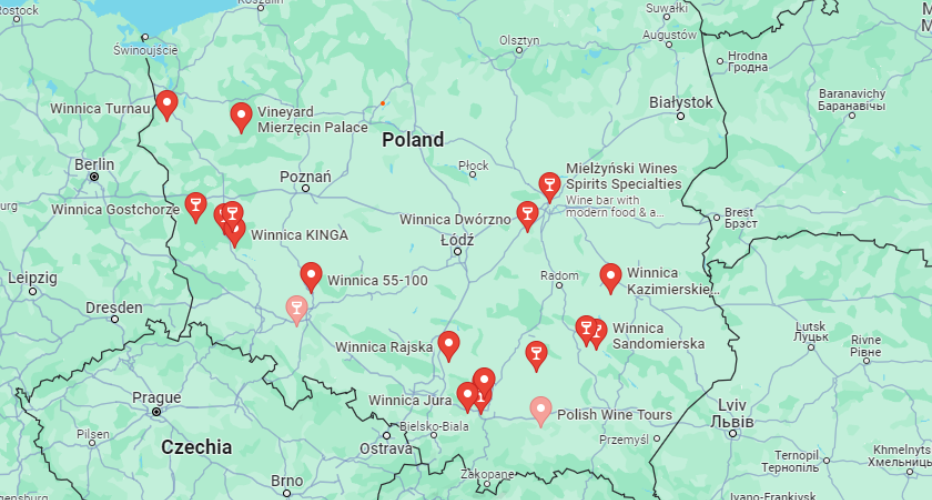
Image: Map of Poland showing wine regions.
However, the country's wine regions benefit from a unique set of conditions, including ample sunshine during the growing season and well-drained soils. These factors, combined with the impact of climate change, have extended the growing season and made viticulture more viable in regions where it was previously challenging. The influence of the Baltic Sea in the north and the moderating effect of lakes, such as those in Masuria, help mitigate temperature extremes, making viticulture possible even at higher latitudes.
Polish winemakers employ a blend of traditional and modern techniques. Hand-harvesting, careful sorting, and gentle pressing are common practices to preserve grape quality. Stainless steel tanks and oak barrels are used for fermentation and aging, depending on the desired wine style. There is a growing trend towards organic and biodynamic practices, with some wineries experimenting with natural and minimal intervention winemaking.
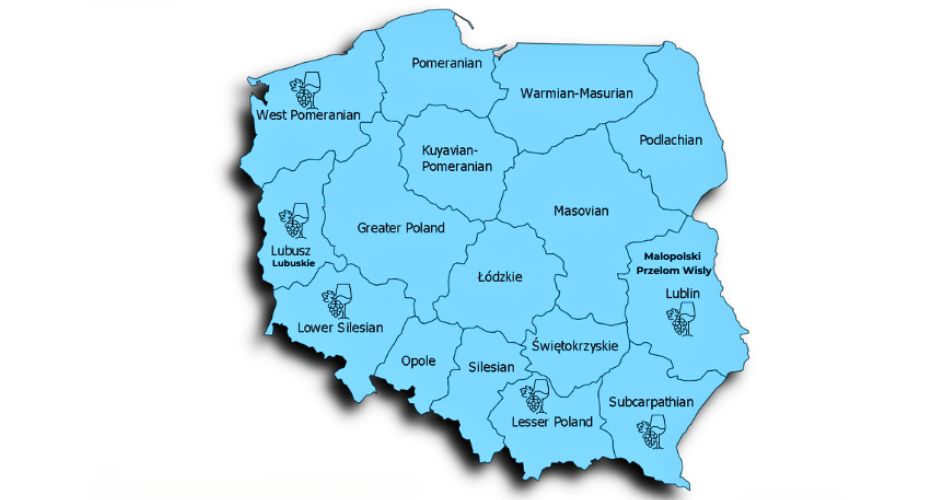
Image Source: Pinterest.
Climate and Soil: Western Pomerania boasts a temperate maritime climate influenced by the Baltic Sea. The region's soil is predominantly sandy, which aids in water drainage and influences the mineral character of the wines.
Key Grapes: The dominant grape varieties include Solaris and Johanniter for whites and Regent and Rondo for reds. These varieties are well-suited to the region's cooler climate and shorter growing season.
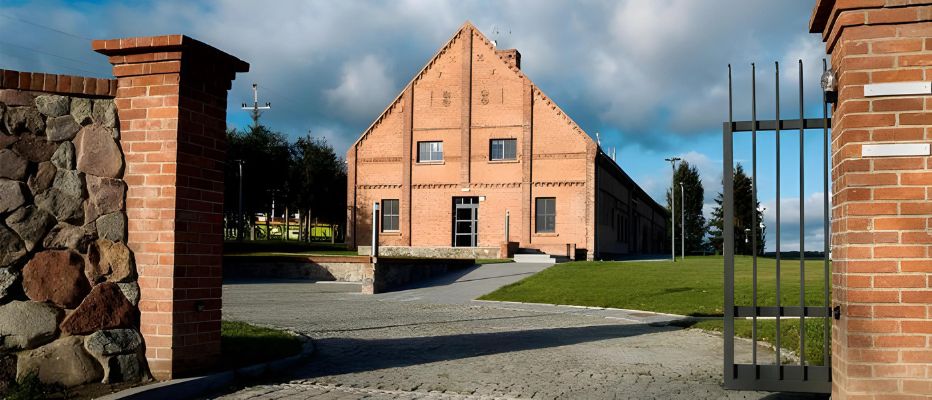
Image: Winnica Turnau
Winnica Turnau: Known for its innovative approach and high-quality wines, Winnica Turnau is a standout in this region, producing exceptional white wines like Solaris and Johanniter.
Winnica Kojder: Specializes in sustainable viticulture, producing both red and white wines that reflect the unique terroir of Western Pomerania.
Climate and Soil: Lubuskie has a continental climate with warm summers and cold winters. The soils are a mix of loess and sandy compositions, ideal for viticulture.
Key Grapes: Popular varieties include Riesling, Pinot Noir, and Solaris. These grapes thrive in the region's moderate climate, producing wines with a distinct mineral edge.
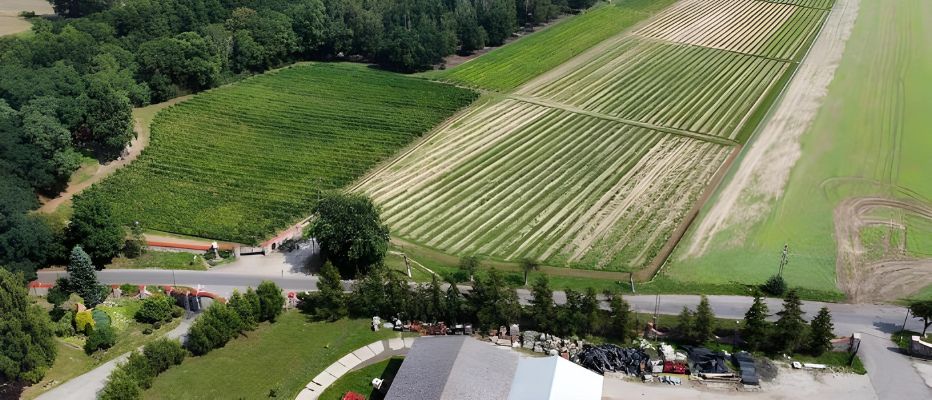
Image: Winnica Łukasz
Winnica Saint Vincent: Renowned for its Rieslings and Pinot Noirs, which exhibit the crisp acidity and minerality typical of the region.
Winnica Łukasz: Focuses on both traditional and modern winemaking techniques to produce a range of wines that capture the essence of Lubuskie.
Climate and Soil: Lower Silesia enjoys one of the warmest climates in Poland, with volcanic and calcareous soils that contribute to the complexity of the wines.
Key Grapes: Chardonnay, Pinot Noir, and Blaufränkisch are prominent here, benefiting from the region's warm summers and well-drained soils.
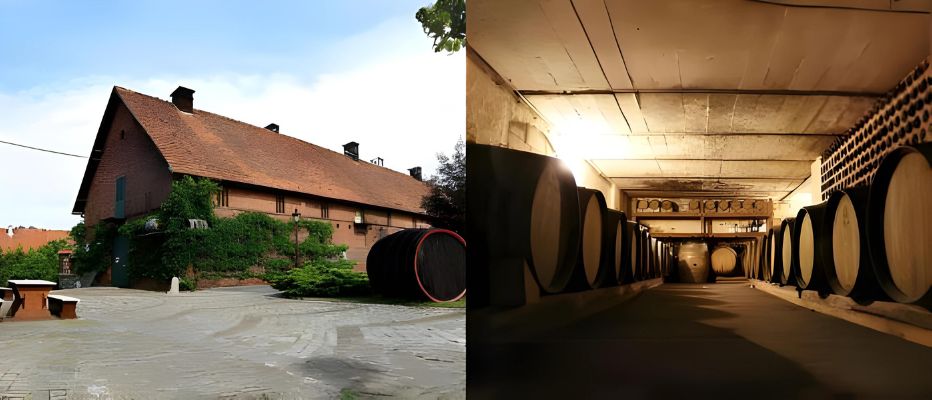
Image: Winnica Jaworek
Winnica Jaworek: Known for its high-quality Chardonnay and Pinot Noir, Winnica Jaworek is a pioneer in the region.
Winnica Miłosz: This winery excels in producing full-bodied reds like Blaufränkisch, showcasing the potential of Lower Silesia's terroir.
Climate and Soil: These regions have a continental climate with warm summers and cold winters. The soils are diverse, including loess, calcareous, and volcanic compositions.
Key Grapes: Jutrzenka, Bianka, and Aurora for whites, and Dornfelder and Maréchal Foch for reds. These varieties are chosen for their resilience to the challenging climate.
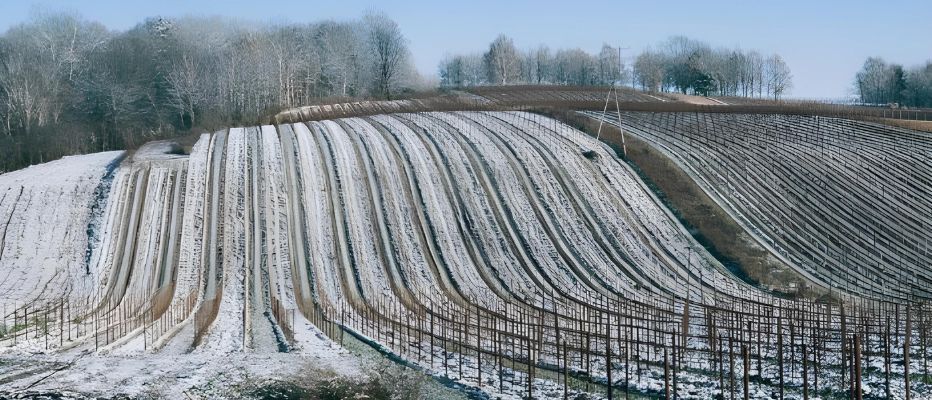
Image: The limestone hill, the foundation of the Winnica Barczentewicz terrier, is covered with white fluff in winter.
Winnica Płochocki: This winery is celebrated for its robust red wines and aromatic whites, particularly from hybrid varieties like Jutrzenka.
Winnica Barczentewicz: Specializes in sustainable viticulture and produces a range of wines that highlight the unique terroir of Lesser Poland and Subcarpathia.
Climate and Soil: Sandomierz and MPW have a continental climate with significant diurnal temperature variations. The soils here are primarily calcareous and sandy.
Key Grapes: Popular varieties include Solaris, Hibernal, and Johanniter for whites and Regent and Rondo for reds.
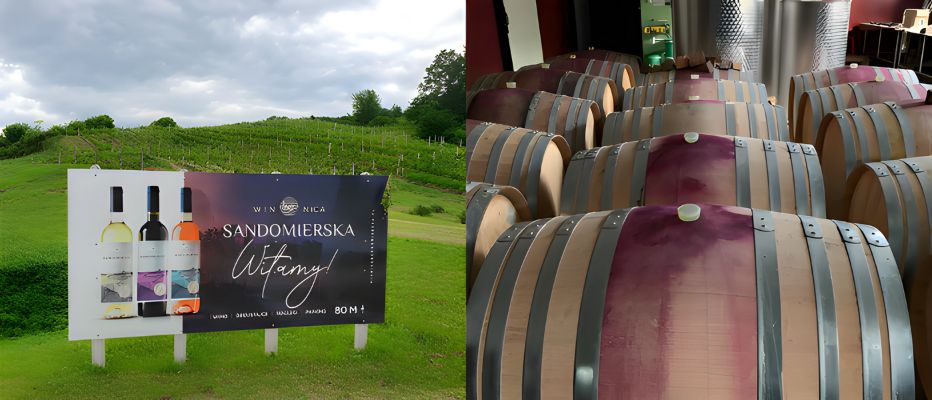
Image: Winnica Sandomierska
Winnica Sandomierska: Known for its expressive whites and elegant reds, this winery is a key player in the region.
Winnica Sztukówka: Focuses on producing high-quality wines from both international and hybrid grape varieties.
Polish winemakers are increasingly adopting sustainable practices. Organic farming, integrated pest management, and minimal intervention techniques are becoming standard. Wineries like Winnica Turnau and Winnica Kojder are leading the way in sustainable viticulture, focusing on biodiversity and soil health to ensure long-term vineyard sustainability.
Poland's wine industry is not only experiencing a revival in terms of volume and quality but also in the adoption of sustainable winemaking practices. Here are some of the key sustainable practices being implemented by Polish winemakers:
Several Polish wineries are embracing organic and biodynamic viticulture. This includes using natural compost, avoiding synthetic chemicals, and enhancing vineyard biodiversity. Wineries like Turnau and Winnica Jura are leading this movement, focusing on natural vineyard management and holistic farming methods.
Polish winemakers are adapting to climate change by selecting grape varieties that are more resistant to local weather conditions. This includes planting hybrids and indigenous varieties that require fewer chemical interventions and are better suited to Poland's cool climate, thereby reducing the environmental impact.
Water conservation is a significant focus, especially in areas with fluctuating rainfall. Wineries are using drip irrigation systems and rainwater harvesting techniques to optimize water usage. This is crucial in regions like Western Pomerania and Lubuskie, where sustainable water management supports vineyard health and productivity.
Polish vineyards are investing in soil health through cover cropping and natural composting. These practices help maintain soil structure, improve fertility, and reduce erosion, which is particularly important in the hilly terrains of regions like Lesser Poland and Subcarpathia.
Renewable energy adoption is growing among Polish wineries. Solar panels and wind turbines are being installed to power vineyard operations, reducing reliance on non-renewable energy sources and lowering carbon footprints. Winnica Płochocki, for example, has invested in solar energy to support its sustainability goals.
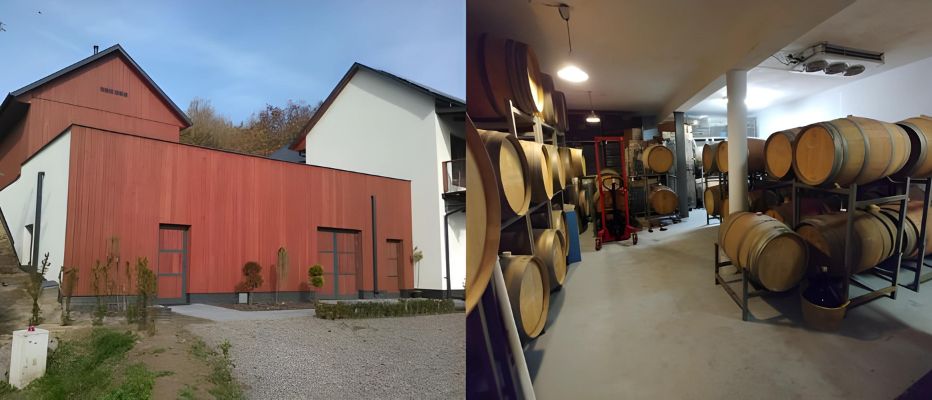
Image:Winnica Płochocki
Polish winemakers are exploring eco-friendly packaging solutions. Lightweight glass bottles, recycled materials, and alternative packaging options like Tetra Paks are being used to reduce environmental impact. This aligns with global movements towards more sustainable packaging in the wine industry.
Maintaining and enhancing local biodiversity is a priority for many Polish vineyards. Planting native flora and creating habitats for local wildlife around vineyards helps promote ecological balance and supports sustainable vineyard ecosystems.
Some Polish wineries, such as Dom Bliskowice, emphasize natural fermentation methods, using wild yeasts that are naturally present on the grapes and in the winery environment. This approach not only highlights the unique terroir of Polish wines but also reduces the need for commercial yeast additives.
Waste management practices are becoming more sophisticated in Polish wineries. Organic waste from grape processing is composted and reused in the vineyards, while wastewater treatment systems ensure that water used in the winemaking process is purified and safely returned to the environment.
Polish winemakers are actively engaging with local communities to promote sustainable practices. Through vineyard tours, workshops, and public tastings, they educate consumers about the benefits of sustainable winemaking and build support for environmentally friendly practices.
Turnau Winery: Focuses on organic practices and minimal intervention in the winemaking process, producing high-quality wines with a strong sense of place.
Kojder Winery: Implements biodynamic farming techniques and produces natural wines with a commitment to sustainability.
Winnica Jura: Known for its sustainable viticulture practices and investments in renewable energy, Winnica Jura sets a standard for eco-friendly winemaking in Poland.
These efforts are positioning Poland as a forward-thinking player in the global wine industry, showcasing that sustainability and quality can go hand in hand. By adopting these practices, Polish winemakers are contributing to environmental preservation while enhancing the reputation and viability of their wines.
Poland's wines are gaining recognition on the global stage, thanks to their quality and unique character. The country's winemakers are experimenting with new grape varieties and winemaking techniques, resulting in wines that are both traditional and innovative. While Poland's wines are not yet widely available outside the country, they are beginning to make a name for themselves among wine enthusiasts.
Polish wines are gaining traction in international markets, with increasing exports to countries like Germany, the UK, and the US. As of 2023, Poland exported approximately 2.5 million liters of wine, with the UK being a significant market. The primary varieties in demand for export include white wines such as Riesling, Chardonnay, and Pinot Blanc, as well as red wines like Pinot Noir and Zweigelt.
Regions like Lesser Poland, Subcarpathia, and the Vistula River Gorge are among the top exporters. Lesser Poland, especially around Kraków, is known for its chalky limestone soils, producing distinctive white wines. Subcarpathia, despite its harsher climate, has attracted large investments and focuses on hybrids and varieties that thrive in cooler conditions
In the UK, Polish wines have been appreciated for their unique characteristics, particularly the white varieties which have found a niche market. The demand in the UK is driven by wine enthusiasts looking for new and interesting wines from emerging regions. The volume of exports to the UK specifically has been around 500,000 liters annually, with significant growth expected as Polish wines continue to improve in quality and gain more international acclaim (Source: Falstaff - Wine, Food & Travel) (USDA Foreign Agricultural Service).
Some of the top-selling Polish wine brands include:
Dom Bliskowice: Known for its exceptional natural wines, Dom Bliskowice has carved a niche in the UK market with its high-quality offerings. Their wines are often described as unique and complex, with a strong emphasis on organic and biodynamic practices.
Skarpa Dobrska: This vineyard is renowned for its Grüner Veltliner wines, which have received acclaim for their vibrant acidity and mineral finish. The microclimate provided by the Vistula River contributes to the distinct characteristics of their wines, making them popular in the UK.
Winnica Jura: Located near Krakow, Winnica Jura produces notable wines such as the Pét-Nat Johanniter Bio. Their focus on organic farming and the production of hybrids and noble vines has attracted a following among UK wine enthusiasts.
Piwnice Półtorak: This winery offers a variety of wines, including the highly aromatic Pálava 2019. Their wines, crafted with care and aged in oak barrels, have become sought after in the UK market for their distinctive flavors and quality.
Gostchorze Vineyard: Known for its sparkling wines like Gost Art Cuvée Brut, Gostchorze Vineyard has been recognized for its high-quality sparkling wines made from Riesling, Pinot Blanc, and Pinot Gris. These wines are appreciated for their effervescence and creamy texture, making them a favorite in the UK.
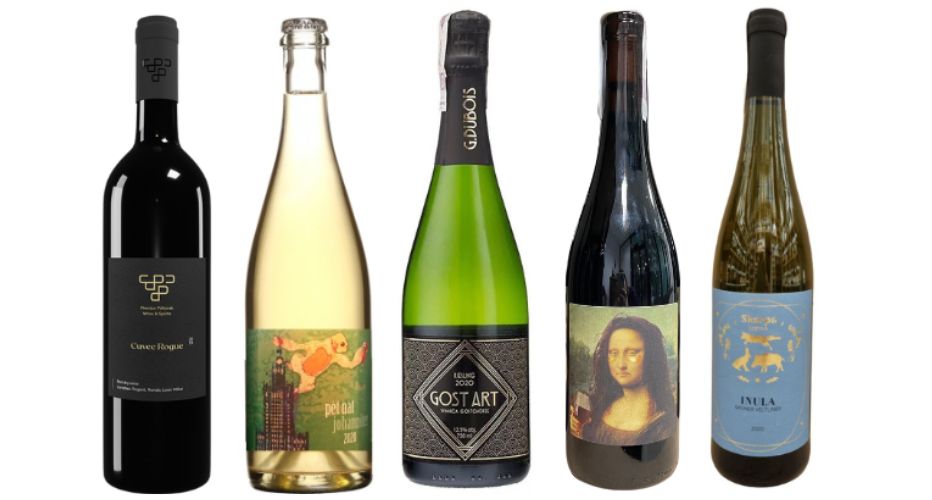
Images: (L-R) Cuvee Rogue from Piwnice Półtorak, Pét-Nat Johanniter Bio from Winnica Jura, Gost Art Cuvée Brut from Gostchorze Vineyard, Natural Wine from Dom Bliskowice and Grüner Veltliner wines from Skarpa Dobrska
These brands are celebrated not only for their high-quality wines but also for their innovative approaches to winemaking and commitment to sustainable practices, which resonate well with UK consumers.
Several UK importers are recognizing the potential of Polish wines. Notable importers include:
Buckingham Schenk: Known for its diverse portfolio, Buckingham Schenk has recently started importing Polish wines, highlighting their unique character and quality.
Graft Wine Company: This importer focuses on boutique wineries and has added several Polish producers to its list, offering a range of reds, whites, and sparkling wines.
Novel Wines: Specializes in lesser-known wine regions and has been instrumental in introducing Polish wines to the UK market.
[[relatedPurchasesItems-38]]
As Poland's wine industry continues to grow and evolve, it is poised to make a significant impact on the global wine market. From the cool Baltic shores of Western Pomerania to the warm, volcanic soils of Lower Silesia, Polish winemakers are crafting unique and high-quality wines that are gaining international recognition. The future looks promising for Polish wine exports, with increasing investment in vineyard management, winemaking techniques, and marketing efforts aimed at boosting Poland’s presence in the global wine market.
With a rich history, diverse terroirs, and a commitment to sustainability, Poland is poised to become a significant player in the global wine scene. As these wines become more widely available, they offer a unique opportunity to explore a lesser-known corner of the wine world and discover the rich history and vibrant future of Polish winemaking.
Header Image Source: Winobranie
Make your wines stand out on the world stage. Enter the London Wine Competition by November 30 to secure Early Bird savings.